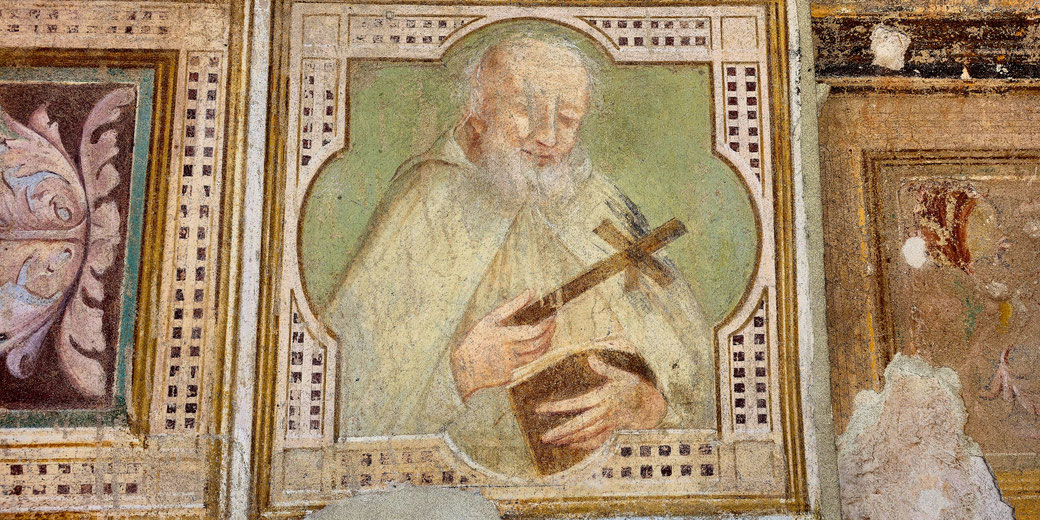What is the real history of St. Valentine and Valentine's Day?

In the modern world, Valentine’s Day often brings to mind romantic gifts, heart-shaped symbols, and sentimental expressions of love.
Its deeper origins, however, lie in the story of a Christian martyr who lived during the later period of the Roman Empire.
Over time, the feast day connected to his name has absorbed layers of religious tradition and literary invention that makes it very difficult to know the true nature of the real St. Valentine.
The story and legends of St. Valentine
During the brief reign of Emperor Claudius II Gothicus, who held power from AD 268 to 270, St. Valentine reportedly worked as a priest in Rome.
Later Christian sources claimed that he performed marriage ceremonies in secret for Christian couples, which placed him in direct opposition to imperial decrees against such practices.
According to later traditions, Claudius had banned young men from marrying in order to make them more willing to join the army, but this is a claim that is lacking historical confirmation but is frequently repeated in devotional literature.
Roman authorities arrested Valentine for his defiance and imprisoned him while he awaited execution.
According to some accounts, Valentine formed a friendship with the jailer’s daughter during his imprisonment.
In certain versions of the legend, he healed her blindness using prayer and left her with a final note signed “from your Valentine”.
Although, this part of the story only appeared in later sources, which hinted at a romantic farewell, but this detail did not feature in the earliest Christian accounts.
In other Church records, there is disagreement about whether the martyr was a Roman priest or a bishop from Terni in central Italy.
Since both reportedly died on 14 February and were buried near the Via Flaminia, their stories eventually merged.
In surviving ecclesiastical calendars such as the Martyrologium Hieronymianum, only the name “Valentinus” appeared without explanation, which made it difficult for later writers to separate the individuals.
The Basilica of San Valentino in Terni, traditionally believed to be the burial place of the bishop, later became a pilgrimage site.
Over time, religious authors expanded the sparse facts into more detailed narratives.
Valentine’s story included miraculous cures and prison conversions, and it featured heroic declarations of faith.
These embellishments followed common patterns found in hagiographies and tried to elevate the saint’s image among Christian communities.
In many cases, the writers focused more on conveying moral lessons than preserving accurate historical details.
What is the historical evidence of St. Valentine?
Among the earliest documents associated with Valentine, none provided verifiable evidence of his actions.
Roman legal texts did not mention a priest or bishop by that name, and no official trial records survived from the period.
The Passio Valentini, written in the fifth or sixth century, presented a dramatic account of his life, including miraculous healings and steadfast refusals to abandon his faith, but it resembled other stylised martyr stories and lacked factual reliability.
At the end of the fifth century, Pope Gelasius I formally established 14 February as the Feast of St. Valentine.
In a surviving letter, Gelasius noted the uncertainty of Valentine’s life, describing him as a man “whose acts are known only to God.”
That remark, written more than two centuries after Valentine’s supposed death, confirmed that no consistent biographical tradition had survived into the late fifth century.
For historians, the common use of the name “Valentinus” in Roman society makes it harder to find a single individual.
Among Christians of the third century, it likely identified multiple individuals, which explains the confusion around the identity of the martyr.
Archaeological remains found near the Via Flaminia confirmed the presence of early Christian burials, but none could be linked directly to Valentine himself.
As a result, no clear historical profile can be pieced together with confidence.
Later, writers filled in the gaps left by the historical record. From the fourteenth century, poets began to link St. Valentine with romantic love.
In Parliament of Fowls, Geoffrey Chaucer described birds that chose mates on 14 February, and his work led to a wave of similar writing references.
Later writers adopted the idea that Valentine’s Day marked the start of spring courtship.
Over time, religious practice gave way to a time-of-year celebration guided more by poetry than scripture.
The history of Valentine's Day
In medieval Europe, Valentine’s Day grew as a mix of feast-day practice and a new courtly tradition.
From the late Middle Ages, people in royal courts and noble households used the occasion to exchange poems, gifts, and tokens of love.
Among the earliest recorded examples, manuscripts from the fifteenth century included verses written for chosen lovers.
Men and women of noble rank often ordered illustrated notes or decorative letters to show affection.
In those social circles, Valentine’s Day became a known date for formal declarations of courtship.
The Church did not promote these practices, and it did not stop them either. Some writers also suggested a link between Valentine’s Day and the Roman fertility festival of Lupercalia, which took place on 15 February, though historians now beleive this link to be implausible.
From the eighteenth century onwards, the use of printed Valentine’s cards grew in England with the spread of cheap printing methods let publishers mass-produce cards.
In the United States, Esther Howland began to make fancy Valentine cards in the 1840s and became known as the "Mother of the American Valentine."
During the nineteenth century, newspaper advertisements promoted Valentine’s cards, and department stores displayed themed items in early February.
Local poets provided verses to print publications, which encouraged readers to join the custom.
As a result, Valentine’s Day gradually became a well-known event in popular culture, separate from its religious roots.
Today, the celebration has become a major commercial event. People give gifts such as roses, chocolates, and jewellery to partners or admirers.
Greeting card companies, florists, and retailers all sell themed products, and, according to recent industry reports, annual Valentine’s Day spending in the United States alone is more than $20 billion.
Although the holiday once honoured a Christian martyr, that link has largely disappeared from public awareness.
The real St. Valentine, whoever he was, now exists mostly as a name attached to a day guided by poets, printers, and advertisers.

What do you need help with?
Download ready-to-use digital learning resources
Copyright © History Skills 2014-2025.
Contact via email
With the exception of links to external sites, some historical sources and extracts from specific publications, all content on this website is copyrighted by History Skills. This content may not be copied, republished or redistributed without written permission from the website creator. Please use the Contact page to obtain relevant permission.





